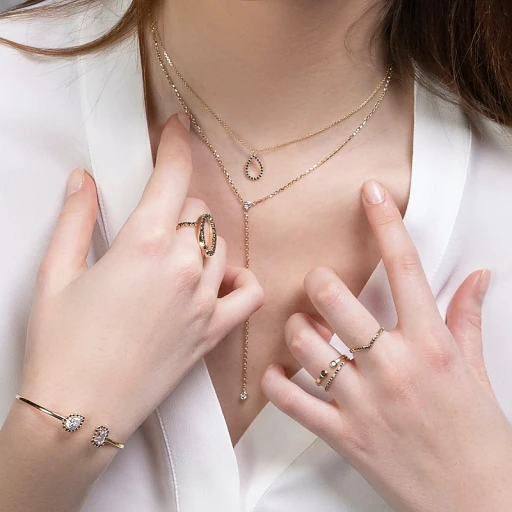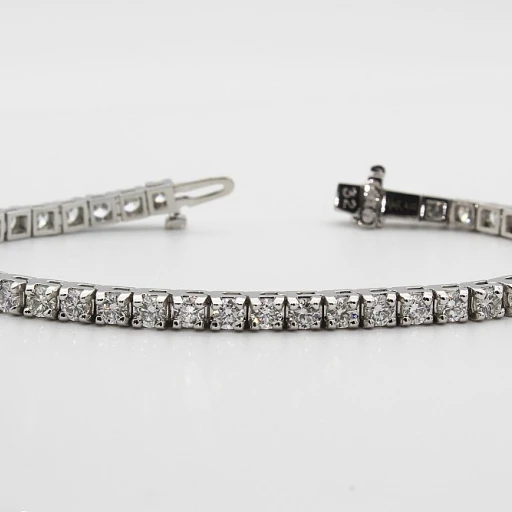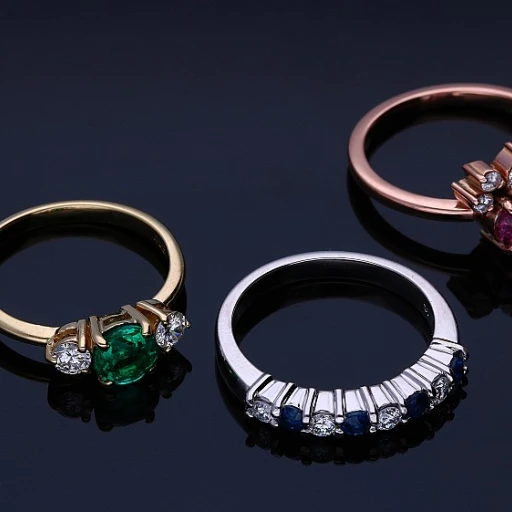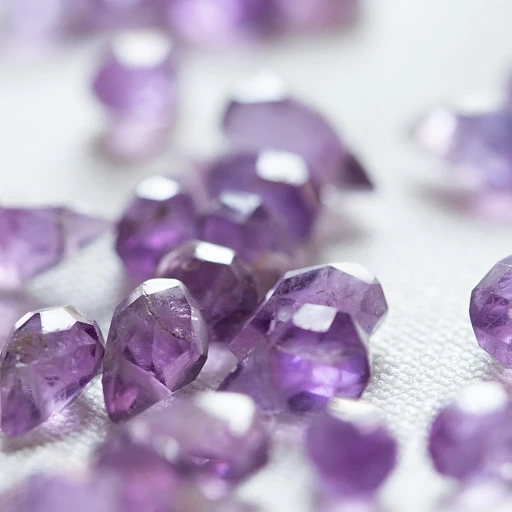
L'Importance of Origin Certification in the Gemstone Market
L'importance de la certification d'origine sur le marché des pierres précieuses
L'acquisition de pierres précieuses de haute qualité n'est pas seulement une transaction, c'est un investissement stratégique. La certification d'origine, une documentation cruciale qui traque la provenance d'une gemme, s'est avérée être un gage de confiance et de valeur sur le marché lucratif de la bijouterie de luxe. On observe que les pierres avec cette assurance peuvent voir leur valeur augmenter considérablement. Selon le Journal of Gemmology, la prime pour un rubis non traité et certifié peut excéder 30% par rapport à une pierre similaire sans certification.
La transparence comme levier de valeur
Dans l'ère de la responsabilité et de la durabilité, les consommateurs veulent plus qu'un simple éclat; ils recherchent la transparence. Avec des rapports de laboratoires éminents tels que le GIA ou l'AGS, les bijoutiers peuvent offrir cette tranquillité d'esprit à leur clientèle. De plus, la traçabilité d'une gemme non seulement conforte l'acheteur mais renforce aussi l'authenticité et le pedigree de la pièce – portant parfois la valeur perçue bien au-delà des chiffres habituels du marché.
Investissement et exclusivité
Élever des gemmes déjà rares à un statut d'extrême désirabilité implique de s'appuyer sur les certifications pour prouver leur exclusivité. Lorsqu'un saphir de Cachemire ou un diamant d'Argyle arrive avec un certificat attestant de son origine, c'est un témoignage irrefutable de sa rareté. Les statistiques montrent que ces gemmes d'origine certifiée atteignent souvent des sommets lors des enchères, battant régulièrement les estimations préalables des spécialistes en la matière.
Analyzing the Impact: Case Studies of Certification on Gem values
The Notable Case of Burmese Rubies Versus Others
The high-value stakes for certified gemstones are vividly illustrated by Burmese rubies, which are believed by many collectors and experts to be the finest in the world. This belief isn’t unfounded—gemstone statistics show that Burmese rubies often fetch higher prices at auction compared to similar rubies without a Burmese origin certificate. For instance, a study highlighted by Gems & Gemology revealed that Burmese rubies could command price premiums of up to 100% over non-Burmese counterpoints of equivalent quality. This stark contrast showcases the profound influence origin certification has on the value perception among buyers and collectors.
Emeralds and the Premium of Colombian Certification
Within the realm of rare emeralds, Colombian certification plays a pivotal role. Just as with rubies, gemstone value can see significant escalation when an emerald is certified as Colombian. It’s reported by the Mineralogical Record that Colombian emeralds can attract a 10-30% price premium over those from other regions, underscoring the importance of certification in marketing and selling high-end jewelry pieces. This example provides a persuasive argument for jewelry owners to consider certifications as a strategic investment.
Price Differentials in Fancy Colored Diamonds
Fancy colored diamonds have seen a surge in value, and the origin can be a game-changer in this market niche. According to the Fancy Color Research Foundation, a pink diamond's origin from the famed Argyle mine in Australia can exponentially increase its worth. Statistics indicate that Argyle pink diamonds have outpaced others in value increases, with price jumps somewhere in the region of 300-400% over the past decade. This substantiates the necessity for investors to diligently acquire origin certifications that resonate with collectors' and consumers' preferences for authenticated provenance.
The Sapphire Saga: Kashmir Versus Others
When diving into the world of sapphires, a Kashmir-origin can distinguish a stone as elite. The Gemological Institute of America reports that Kashmir sapphires are sold at staggering premiums due to their rare blue hue and historic mines, which are no longer in operation. To illustrate, a Kashmir sapphire can be valued at double, if not more, the price of an equivalent sapphire of a different origin, thereby emphasizing the financial weight that origin certification carries within the gemstone industry.
The Contention Over Certification Value
While certification often ushers in higher prices for gemstones, it’s vital for jewelry owners to analyze the cost-benefit ratio of obtaining such documentation. Certification expenses and increased purchase prices from sellers who have obtained them must be weighed against the potential value addition. Some argue that trends and market dynamics can at times eclipse the importance of origin, whereas others see it as an indispensable part of gemstone investing. Nonetheless, the numbers don't lie, and for the investor with a long-term view, certificates can often be regarded as a hallmark of authenticity and rarity that eventually translate into value.
Strategizing for Jewelry Owners: Integrating Certification into Your Investments
Maximizing Your Gemstone Portfolio with Smart Certification Choices
For jewelry owners and investors, understanding the nuanced value that origin certification adds to rare gemstones is paramount. Statistics from the Gemological Institute of America (GIA) indicate that certified gemstones can fetch premium prices, sometimes increasing their market value by 10 to 30 percent compared to non-certified counterparts. As a jeweler, the decision to invest in certified gemstones is not merely about authenticity, but it's a strategic move that enhances the trustworthiness and prestige of your inventory.
- Increased consumer confidence in certified gemstones leads to higher demand and prices.
- Exclusive collections often focus on stones with provenance, underscoring their unique stories—which can be a selling point.
Creating a Narrative Around Certified Rarities
Incorporating origin certification into your strategy goes beyond the certificate itself; it's about weaving a tale that captivates and educates your clientele. A Forbes article illustrates the significance of this approach by presenting how storytelling around a gemstone's origins can lead to enhanced customer engagement and loyalty. Acquiring gems with origin certification is akin to curating an art gallery where every piece is backdropped by rich history and context, making them not just products but pieces of culture.
The Calculated Approach to Acquiring Authenticated Gems
When you invest in certified gemstones, it's not just about the here and now. The Rapaport Group has reported that certified diamonds, for instance, have shown a steadier price appreciation over the years. Jewelry owners need to analyze market trends, considering factors like origin and certification, but also looking at the stone's intrinsic qualities such as cut, color, clarity, and carat. The approach to investing in these precious commodities should be both analytical and forward-thinking to ensure long-term gains.
- Research the most in-demand gemstone types and origins.
- Monitor market trends for fluctuations in value dependent on certification.
- Evaluate the long-term appreciation potential of a certified stone.
Optimizing Investment with the Sparkle of Certification
Finally, in an industry where rarity and authenticity lead to value, the implementation of origin certification should be strategic. Deloitte's recent insights into luxury goods market trends corroborate that younger consumers, in particular, prioritize transparent sourcing and ethical considerations in their purchasing decisions. By aligning your investments with the desires of a conscious market and stepping up the story-telling aspect through provenance certification, you can not only increase the value of your offerings but also their desirability.
Remember, every certified gemstone in your showcase is an opportunity to reflect the embodiment of purity, history, and value—a trifecta that can significantly set you apart in the fine jewelry marketplace.
Beyond the Certificate: Additional Factors Influencing Gemstone Rarity
Understanding Gemstone Rarity Beyond Certification
While origin certification is a critical component that often enhances the value of fine gemstones, it is essential for jewelry owners to recognize that several other factors contribute to a gemstone's rarity and allure. Reports suggest that the rarity of a gemstone, which affects its value, is defined not only by its geological scarcity but also by its color, clarity, cut, and carat weight (often known as the Four Cs). For instance, a 1-carat ruby without a certificate may still fetch a high price if it exhibits a deeply saturated pigeon's blood color, which is highly sought after among collectors.
The Four Cs: A Jewel's Quintessence
- Color: The most impactful among the Four Cs, color can significantly determine a gemstone's value. A vivacious, evenly distributed hue is preferred. For example, Kashmir sapphires, known for their intense blue with a subtle milky quality, are greatly prized.
- Clarity: Clarity refers to the absence of inclusions. A near flawless gemstone can command sky-high prices. The historic sale of the 'Pink Star' diamond, which achieved a staggering $71.2 million at auction, exemplifies the premium placed on clarity.
- Cut: A masterfully cut gemstone will exhibit enhanced brilliance and sparkle, thus raising its desirability. An exceptional cut can augment a stone's appeal manifold, as seen with the intricately faceted 'Centenary Diamond'.
- Carat Weight: Larger stones are rarer, and thus, they generally carry a heftier price tag. However, it's the combination with the other Cs that determines the overall value. The 'Cullinan Diamond' is a testament to how carat weight, in concert with other factors, can elevate a gem's importance.
The Role of Market Demand in Valuation
Market demand is a dynamic influencer of gemstone rarity and value. According to industry analysis, trends can shift the focus towards certain gemstones, spiking their prices. For example, royal engagements have historically led to an increased demand for specific stones, like sapphires following Princess Diana’s and later Duchess Kate’s engagement rings, resulting in heightened prices due to their association with nobility and prestige.
Historical and Cultural Significance: A Jewel's Narrative
It's also vital for fine jewelry investors to recognize how the historical and cultural significance of a gemstone can contribute to its rarity. Gems with a storied past or those associated with cultural heritage often fetch a premium. For example, the 'Hope Diamond', beyond its certification, carries a tale that bolsters its worth in the eyes of aficionados and historians alike. Its legend, filled with curses and royal owners, adds layers of value unattainable by certification alone.
Engaging Debate: Is Origin Certification Always Worth the Investment?
Exploring the Contours of Certification Value
Origin certification has long been a keystone in the valuation of rare gemstones, signaling a gem's provenance and authenticity. According to a report by The Gemological Institute of America (GIA), certified gemstones can command higher prices due to the assurance they provide. Certifications can act as a passport for gems, reflecting not only their origin but also an adherence to ethical mining practices. However, not all certifications are created equal. Some industry experts argue that for lesser-known gem varieties, the cost of certification may not equate to a significant increase in market value.
The Nuanced Balance of Cost vs. Benefit
- Cost of Certification: For some jewelers, the expenses incurred during the certification process may outweigh the financial benefits, especially for gems where the premium for provenance is minimal.
- Market Perception: Consumer demand for certified stones may vary. While blue-chip gemstones like diamonds and sapphires see a boost in value with certification, the same can't always be said for all gem types.
- Investment Strategy: Savvy jewelry owners must weigh the benefits of certification in the context of their unique inventory and clientele preferences.
Industry statistics highlight that the upper echelon of gemstones, such as Burmese rubies or Kashmir sapphires, often see their value augmented by 20-30% with reputable origin certificates. Nevertheless, smaller players in the market might struggle to recoup the investment in certification, according to the Association of Fine Jewelers.
Expert Perspectives on Origin Certification
"While certification is an indispensable tool for transparency and consumer assurance, it is not a universal panacea for value addition," states renowned gemologist Dr. Emily Stone. The intrinsic value of a gem and market trends also play crucial roles in determining its worth. There are cases of exceptional gems that, despite lacking certification, fetch extraordinary prices at auction due to their inherent qualities. Jewelry owners must analyze each gem on a case-by-case basis to decide if the extra layer of certification aligns with their strategic objectives.
Ultimately, statistics point to a varied impact of origin certification on the value of rare gemstones, contingent on multiple facets that savvy jewelry investors can't afford to ignore:
| Gem Type | Impact of Certification | Cost-Benefit Ratio |
|---|---|---|
| Diamonds | Significant | Favorable |
| Colored Gemstones | Moderate to High | Variable |
| Lesser-Known Gems | Minimal to None | Often Unfavorable |
As the debate continues, the choice remains personal and strategic, tailored to each jeweler's ethos, clientele, and long-term vision for their collection of fine jewelry investments.
-large-full.webp)
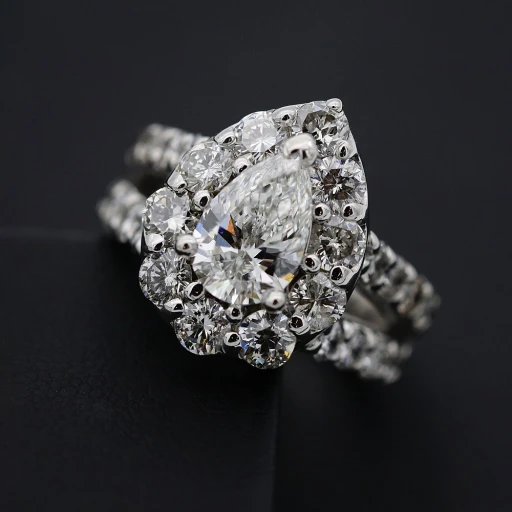

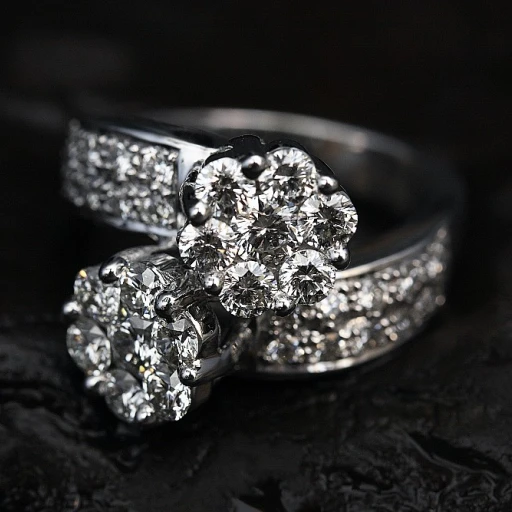
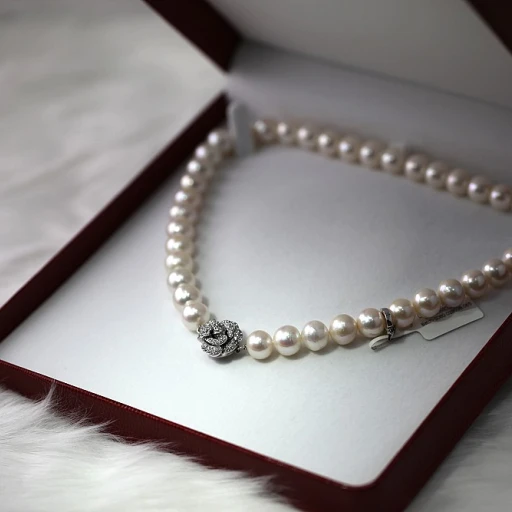
-large-teaser.webp)
